The Pioneer DJ XDJ-RX3 has been hotly anticipated since the arrival of the RX2! In 2019, many thought of the XDJ-XZ as the RX2’s unofficial successor. It has now become apparent that the XZ is not merely an RX sequel but is in an XDJ category all of its own.
Whilst it’s unusual for a manufacturer to pit two of their existing products against each other, Pioneer DJ finds themselves at the centre of a Google comparison frenzy conducted by would-be purchasers doing just that! So why are the flagship XDJ all-in-one units so frequently compared? Surely the XZ and the RX3 don’t step on each other’s toes as they serve opposite ends of the market? With a price difference north of £400, it is worth diving into comparison to explore their differences adequately.
Deciding which Pioneer DJ all-in-one will take pride of place in your equipment lineup may take a little more than skimming the surface! It’s time to put the XDJ XZ vs XDJ RX3.
Meet the XDJs:
Pioneer DJ XDJ-XZ
The XZ is technically the flagship XDJ all-in-one. Released in late 2019, it boasts two full-sized ‘CDJ’ deck compartments sandwiched between a fully featured four-channel ‘DJM’ mixer. It does nearly everything a CDJ 2000 NXS2 / DJM 900 NXS2 rig can do, with a few welcome bonuses.
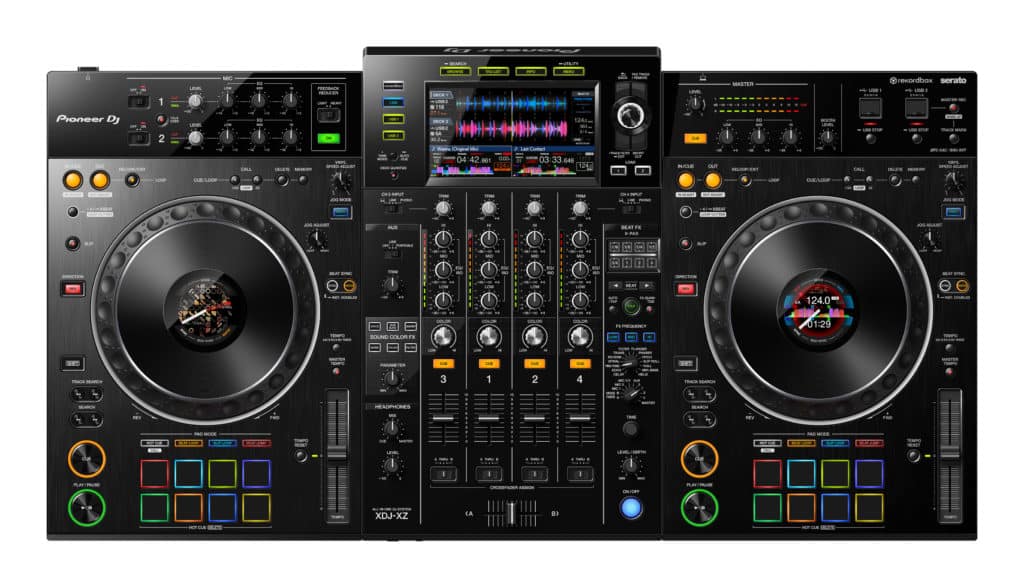
Pioneer DJ XDJ-XZ
The main addition is their central jog wheel displays which feature a modern cue position marker, like those on the DDJ-1000 controller. These useful displays show crucial data such as track waveform, BPM, deck tempo range and track artwork, to name a few.
Interestingly, the XZ does not support multi-layering decks in standalone mode, meaning only two of the four channels can be used without additional sources. Many had hoped that the XZ would be the answer to Denon DJ’s Prime 4, which is all about 4-deck standalone mixing ‘in-the-box’ with multi-layering decks. But it’s not.
Although Pioneer DJ have controllers that feature multi-layering decks, and the XZ can do it in HID or DVS mode, the feature is limited to being software based. Perhaps hardware limitations stopped it from transferring over to standalone mode. As a positive, having extra gear gives more tactile control over playing decks and has a more professional look. It also encourages flexibility by ensuring a greater degree of future-proofing since you can always add new equipment further down the road.
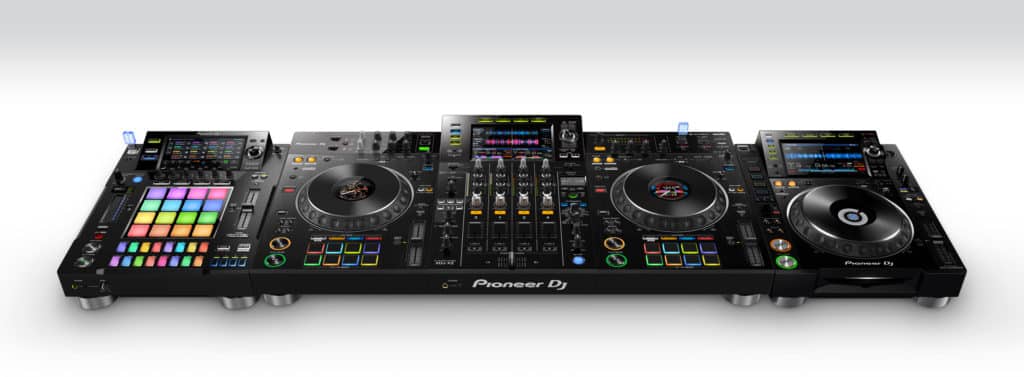
The XDJ-XZ hosting additional equipment
The build is sturdy and feels like an NXS2 setup but with performance pads and better jog displays. Almost every feature from the NXS2 players and mixer has made the jump, yet the unit comes in at around £2,100, costing only slightly more than a single CDJ 2000 NXS2 multi-player!
XDJ XZ Inputs & Outputs
The I/O of this unit is fully comprehensive, living up to the ‘professional’ description from Pioneer DJ. It includes:
- 2 Master out sockets with balanced XLR and unbalanced RCA options.
- 1 Booth output on balanced TRS jacks.
- 2 Headphone ports; a 1/4-ich stereo jack and a 3.5-mm stereo mini-jack.
- 1 Send on unbalanced 1/4 inch TRS Jacks.
- 2 USB A input ports.
- 1 USB B input port.
- 2 Line inputs on unbalanced RCAs.
- 2 Phono inputs on unbalanced RCAs.
- 1 Auxiliary input on unbalanced RCA.
- 2 balanced Microphone inputs on XLR/ 1/4 inch TRS combo jacks.
- 1 Power input IEC port.
- 2 Ethernet input ports for linking to external Smart Link devices such as CDJ 2000/3000s
- 1 Ethernet output daisy chaining port.

The XDJ-XZ’s rear I/O connections
As an installation piece, this unit is king. It would sit perfectly in a permanent position at a small club, bar or studio space.
Mobile DJs should seriously consider the XZ’s weight and footprint, which make transporting it more than a typical one-person job. Coming in at 13 KG, the device does not seem to be the heaviest piece of gear. However, with awkward dimensions, you cannot carry the unit in a soft case. It must be transported in a coffin case. Its combined weight is, therefore, 30 KG minimum. Portable, this is not!
Another drawback of the XZ is its 7” HD screen which has not aged gracefully in its three years. With modern gear, screens have grown in size and become a centre-stage feature. Take the RX3, for example; its screen is class-leading!
Pioneer DJ XDJ-RX3
The latest iteration of Pioneer DJ’s most successful all-in-one.
RX, as a range, has seen massive popularity owing to a potent combination of serious features and a practical, compact design.
Boasting everything you need for a killer DJ set, this RX refresh from late 2021 heralds a 10.1” touch screen, which supports rekordbox 6’s 3-band waveforms in glorious high definition. It also has butter-smooth motion owing to its high refresh rate. Navigation and slick GUI are inherited directly from the new flagship CDJ-3000 multi-player.
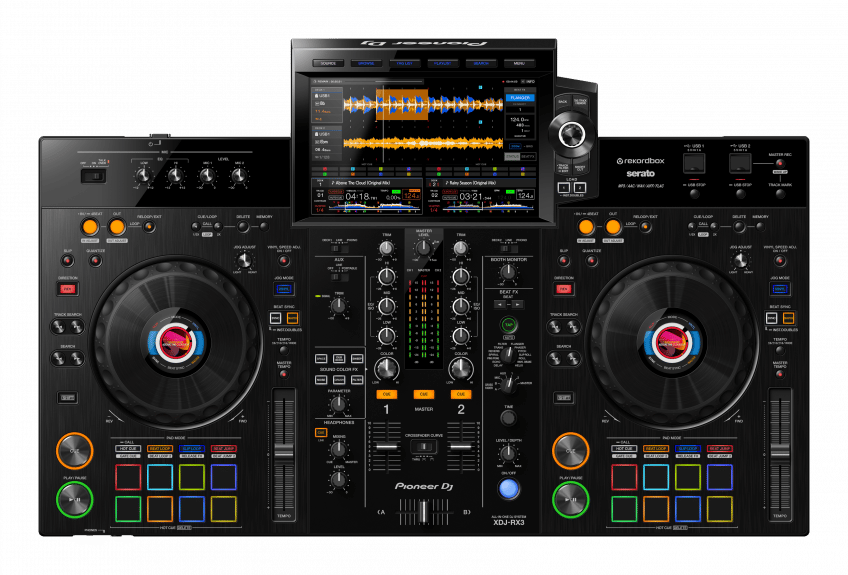
Pioneer DJ XDJ-RX3
Fresh internals give the system a quick response time, which makes the RX3 a modern-day hero! It feels next-generation whilst retaining most of the features that make the XZ so popular: including the same deck-mixer-deck layout but with a bigger screen above the mixer!
The practicality of the next-generation screen is exemplified by the automatic popping up of the X-PAD when the beat effects are engaged. Removing the physical X-PAD is one of many innovations and carefully considered cutbacks that allow the RX3 to be two-thirds the mass of the XZ!
Unfortunately, its cost is not one-third less! At £1699, it is the most expensive RX at launch, even in relative terms, considering inflation. However, generation three also has more to offer than its predecessors.
XDJ RX3 Inputs & Outputs
Its I/O is impressive for its mobile size, with:
- 1 balanced Master Output on XLR.
- 1 unbalanced Master Output on RCA.
- 1 Booth output on balanced 1/4 inch TRS Jacks.
- 2 Headphone jacks; a quarter inch and a 3.5 mm.
- 2 USB A input ports.
- 1 USB B input port.
- 2 Line inputs on unbalanced RCA.
- 2 Phono inputs, also on unbalanced RCA.
- 2 balanced Microphone inputs, both XLR/1/4 inch TRS combo jacks.
- 1 unbalanced 3.5 mm stereo mini jack input.
- 1 Auxiliary input RCA socket.
- 1 Power input IEC port.

XDJ-RX3 rear I/O connections
As a portable DJ device, not many others can claim to offer the level of performance features and connectivity of this all-in-one.
Weighing in at under 10 KG and with similar dimensions to the previous RX models, the XDJ-RX3 happily sits in a soft case making it easily transported by a single person.
A downside to this compact controller is its lack of physical controls. Therefore, accessing some features means working through on-screen menus. Others have not made it over from the flagship gear, such as three-band EQ for the Beat FX!
Due to all of the key ingredients they have in common, deciding between two pieces of Pioneer DJ hardware has never been such a close call:
Both offer two decks in standalone mode and sport central jog wheel displays and jog tension adjustment. Perfect for quickly glancing at valuable track data and for setting the jogs to suit all types of DJ: from the free-wheeling to the tight nudgers, the hardware control on each unit has it covered!
The DJM 900 NXS2’s entire range of sound colour and beat effects are inherited by each, so there’s no shortage of resources for creative flare on either device.
Both units have full-sized tempo adjustment faders and illuminated PLAY/PAUSE and CUE buttons in the club-standard CDJ style. They also feature full looping controls, as found on CDJs. In addition, both have eight full RGB backlit, highly responsive performance pads.
The three-band EQ is also selectable between classic -26db and full-kill isolation.
With regard to supported DJ software, each natively integrates with rekordbox and is fully compatible with Serato DJ Pro in HID mode.
For DVS mode, however, the differences between the units become apparent…
How the XDJs differ
For all that they have in common, the XDJs offer several crucial differences.
The size of each XDJ indicates a lot about what they can deliver. With four mixer channels, the XZ is clearly designed to host external sources. Plugging in turntables opens up DVS mode for rekordbox and Serato DJ Pro.
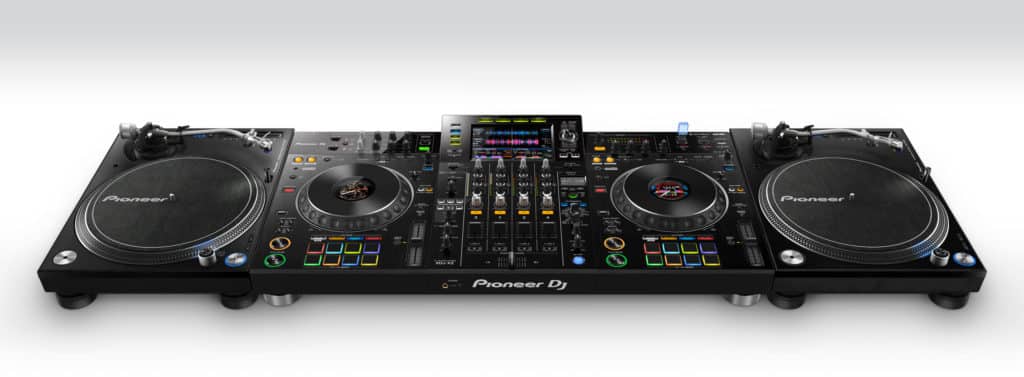
XDJ-XZ with turntables for DVS mode
The RX3, on the other hand, does not support DVS mode despite also housing phono inputs. Playing analogue vinyl within a standalone or HID set seems to be the vibe Pioneer DJ have gone with here.
Concerning phono connections, the sound quality of the preamps in the XZ is superior to those in the newer RX3. Upon comparison, they sound the same as the ones found in the club-standard DJM-900 NXS2 mixer, further demonstrating the XZ’s ‘professional’ status.
The I/O is also more complete on this unit, with several expanded options over the RX3. Starting with the microphones, it has an impressive feedback reducer feature not found on the RX3. It also includes two separate three-band EQ controls for its two microphone inputs compared to a single two-band control which affects both microphone inputs universally.
Public service announcements are not a primary consideration with the RX3. However, the XZ handles them like a pro.
In addition, the XZ has a three-band EQ for the master output, a feature reminiscent of the warm analogue rotary mixers found at super clubs in the 90s. Touches that all cement a flagship feel for this device.
Another important EQ feature of the XZ over the RX3 is its 3-band frequency control for the Beat FX. You can isolate or remove frequency ranges from a playing effect, allowing more flexibility and scope for subtlety.
In terms of performance features, the XZ has full-sized 206 mm mechanical jog wheels with tension adjustment, just like on the CDJ 2000NXS2. The RX3 instead has capacitive jogs with tension adjustment. They are also shrunken down in size, measuring only 153 mm.
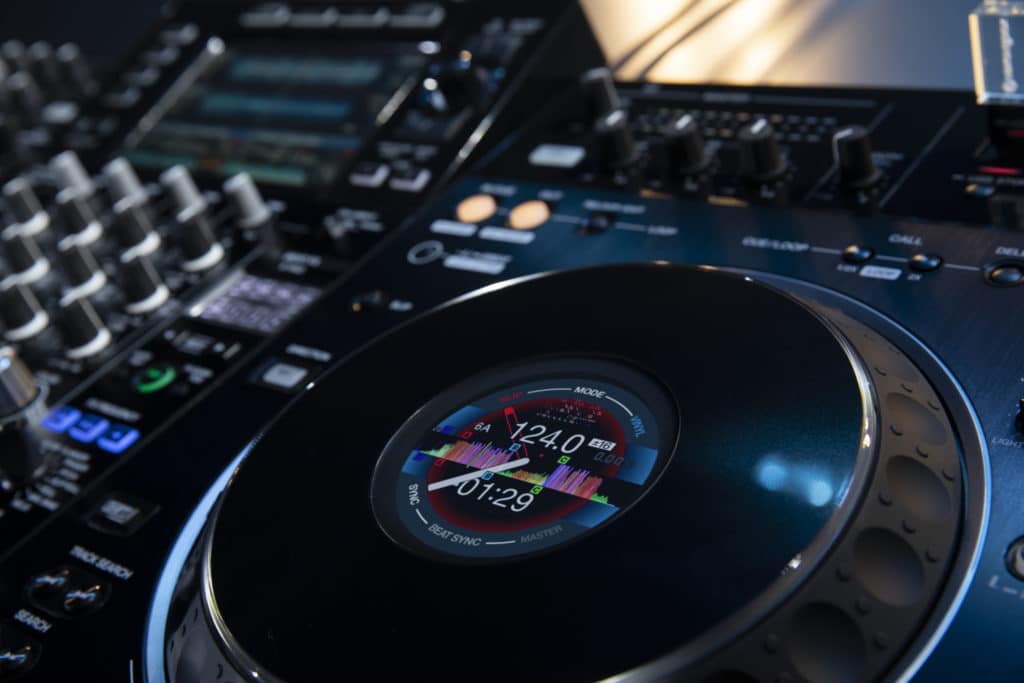
XDJ-XZ jog wheel with central display
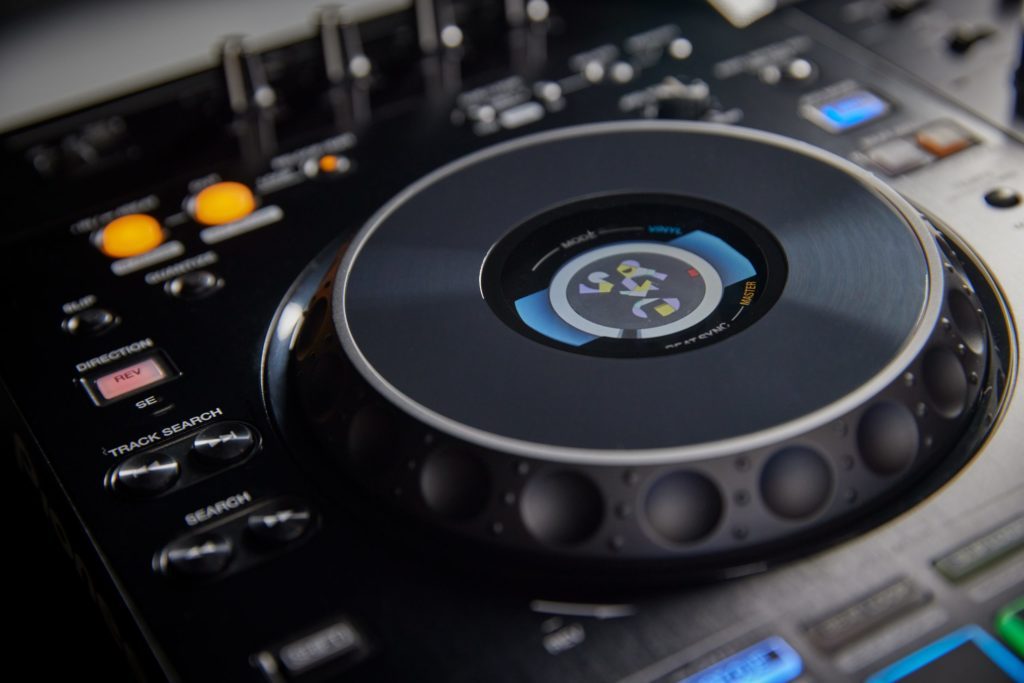
XDJ-RX3 jog wheel with central display
However, the jog wheels on the RX3 are class-leading, boasting a quantum leap in performance above those found on the RX2. They are designed to feel and behave like a full-sized CDJ mechanical wheel.
From the mechanism to the aesthetics, they even come with the same CDJ-style rubberised trim with finger grooves for nudging; a la the jogs found on the DDJ-800 controller!
Unfortunately, the central jog displays do not show waveform data. A drawback minimised by the RX3’s bigger screen, which displays more data than that on the XZ.
In fact, for most of the RX3’s compromises, its 10.1” high-resolution display offers some form of compensation. And if not, other features give the RX3 an edge:
It has a box-fresh GUI, which supports rekordbox 6’s 3-band EQ waveforms. An attribute the XZ’s lower resolution 7” display cannot support. Navigation is also smoother on the RX3, thanks to its modern CPU. Its performance pads include 4 more modes than on the XZ, including the very popular GATED CUE for finger drumming. There is also the welcome addition of RELEASE FX, enabling creative ways to break from an effects cycle taken straight from the RMX-1000!
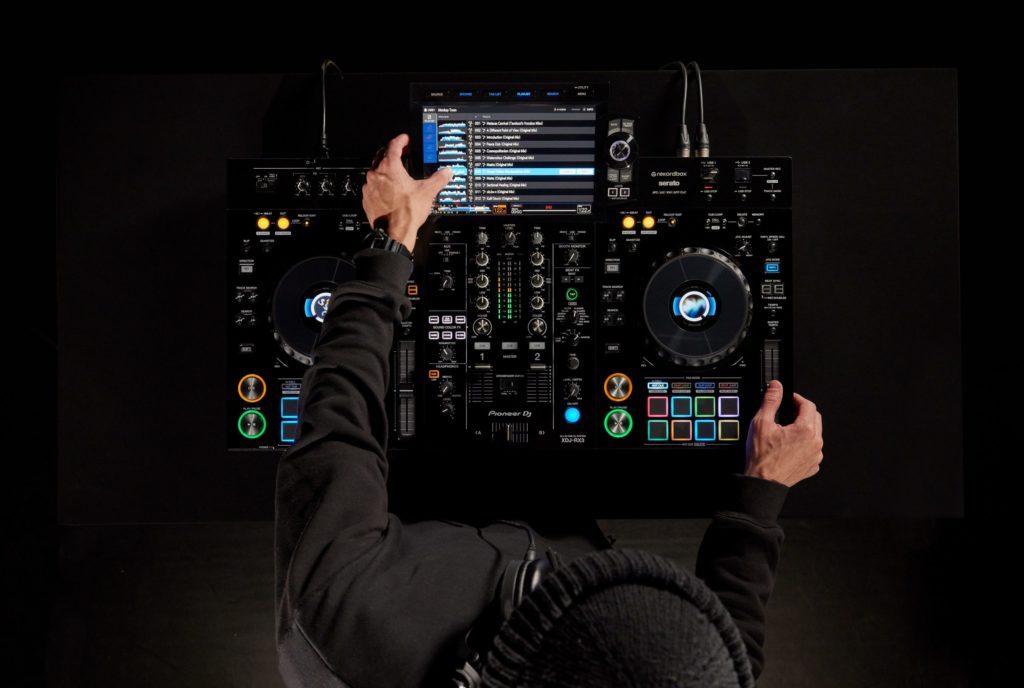
XDJ-RX3’s useful 10.1″ high resolution screen
Additional benefits include an effects save bank, allowing users to save their four favourite beat effects to a quickly accessed on-screen bank, negating the need for scrolling through all 14 beat effects with the selector knob.
Each deck on the XDJ RX3 also has independent quantise, allowing free play of cue positions and BPM on one deck whilst the other snaps firmly to a grid. Quantise on the XZ affects all decks at once.
Which XDJ is the right XDJ?
Pioneer DJ are spot on with their official descriptions for the units: the XZ is ‘professional’ through and through. Sadly, it suffers from launching on the edge of a generational leap. It looks dated after only three years on the market, owing to its small screen, low refresh rate and outdated GUI.
That’s not to say it doesn’t deserve its place as Pioneer DJ’s flagship all-in-one. Thanks to its professional sound, plentiful I/O and massive feature set for a reasonable price, it remains the big boy XDJ. That is, until, and if, Pioneer DJ decide to make a sequel based on rekordbox 6!
The RX3 is a solid update to a well-established family with little to complain about. For the mobile DJ, it is the best portable all-in-one with a club-standard layout. It lives up to its ‘performance’ description, offering more useful features than any other Pioneer DJ device!
The only real issue is a lack of in-built streaming support for stand-alone mode. The workaround is to use the units in either HID or DVS modes, where a healthy selection of streaming services opens via rekordbox or Serato DJ Pro.
But that means adding a laptop to your set-up. Depending on your needs, this may defeat the purpose of buying an all-in-one rig!
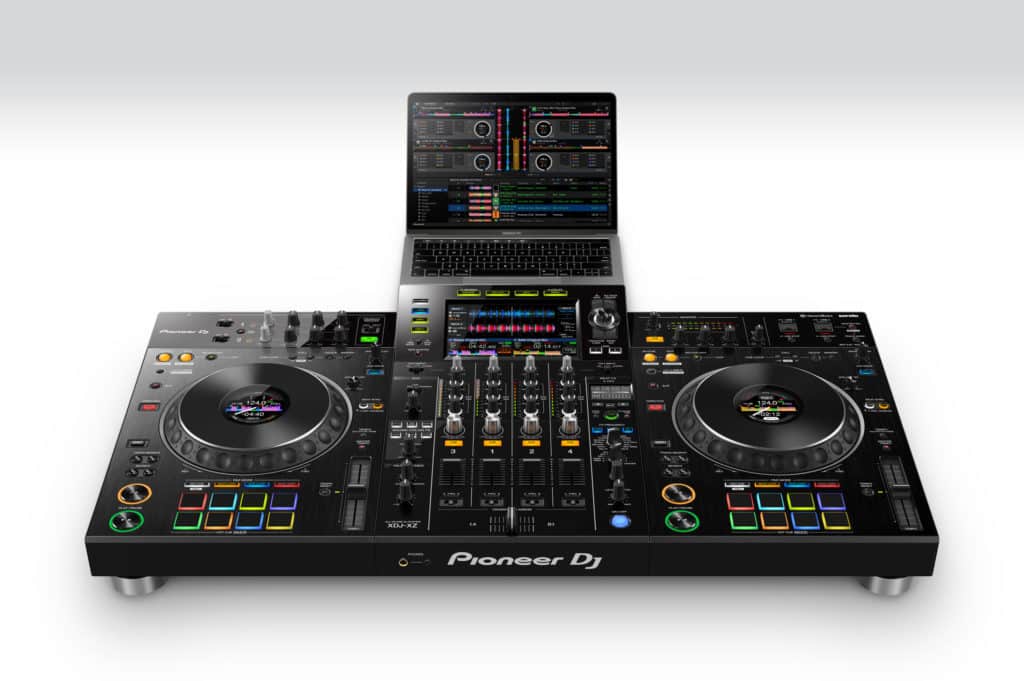
XDJ-XZ in HID mode with added laptop
If exploring streaming services is a primary factor, an alternative look at Pioneer DJ’s dedicated rekordbox and Serato DJ Pro controllers may be in order.
Whilst there are strong similarities between the XDJs, the contrasting sweet spots that they hit are significant within Pioneer DJ’s ecosystem. A potential buyer for one is unlikely to be persuaded by the other.
With one exception.
DJs looking to downsize their rider without compromising on mixing features now have the perfect device to move over to with the RX3. The practicality of its light weight and dimensions, teamed with plenty of club-standard traits, makes it ideal.
On the other hand, the XZ is undoubtedly on the radar of many smaller venue installers and DJs wanting a home studio that replicates the club in full! With features above and beyond those found on a CDJ 2000 NXS2 and DJM 900 NXS2 rig, and at a fraction of the cost, this all-in-one offers unrivalled value!
The XDJ-XZ remains the undisputed flagship all-in-one. It is ideally suited to DJs wanting an undiluted club experience who can carry its weight or intend to use it as a permanent or semi-permanent installation piece.
The XDJ-RX3 offers unrivalled club characteristics within a super portable body. Ideal for those wanting convenience without the need to compromise too heavily on the DJ experience.
Either choice gets your fingers control over cutting-edge beat and sound colour effects, and they each put you onto an industry-standard workflow.
Check out our XDJ courses to get a full grip on navigation, feature breakdowns and performance tips and tricks. Learn to maximise the use of your choice of unit at a pace that suits you!
And for guaranteed results, our amazing Complete DJ Package is designed to give you all the resources and professional support you need to achieve success as a DJ within 60 days or your money back!
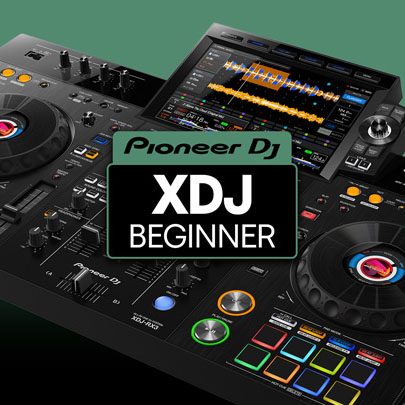
Pioneer XDJ DJ Course
8.5 hours
47 lessons
Beginner
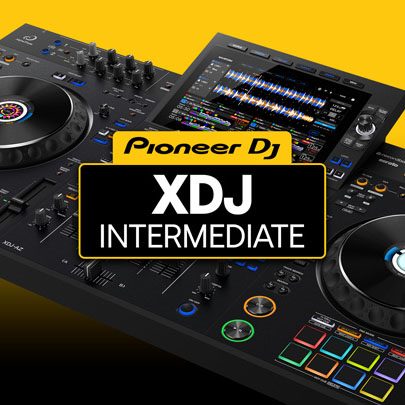
Pioneer XDJ DJ Course
4.5 hours
27 lessons
Intermediate

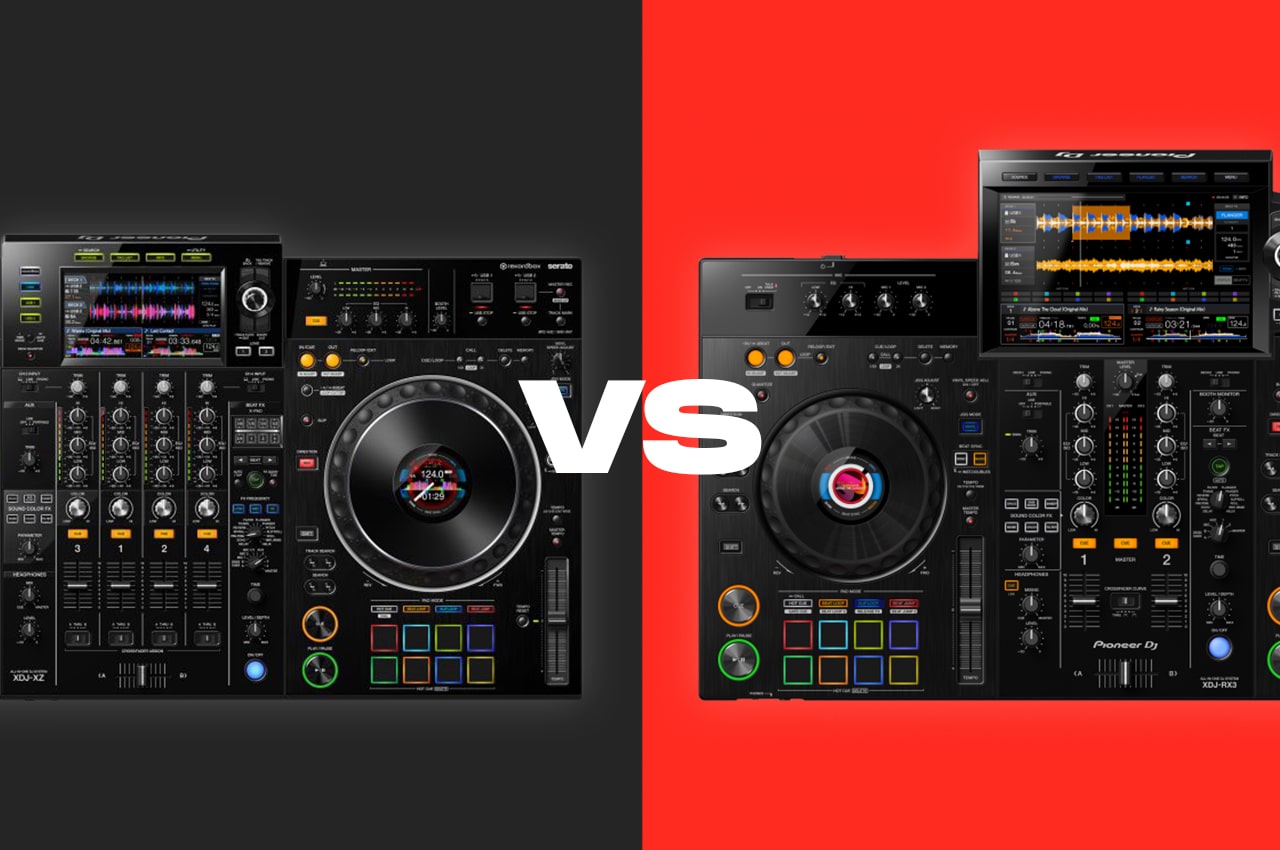
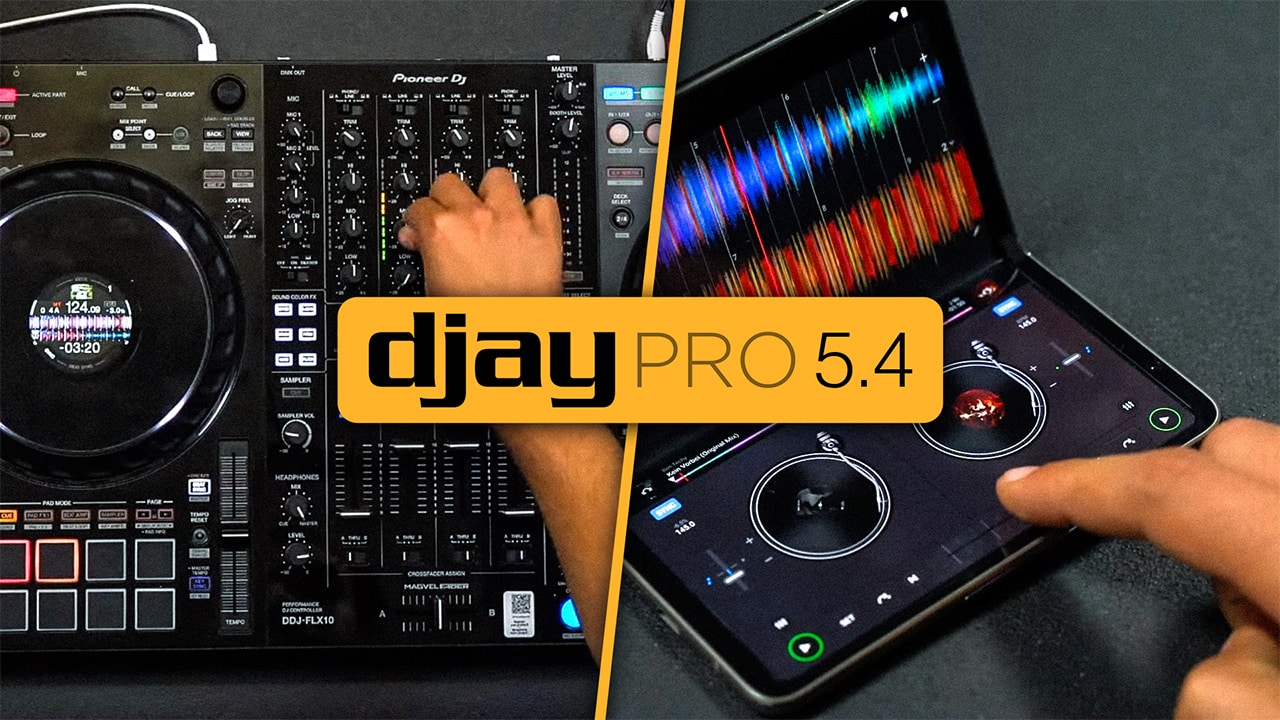

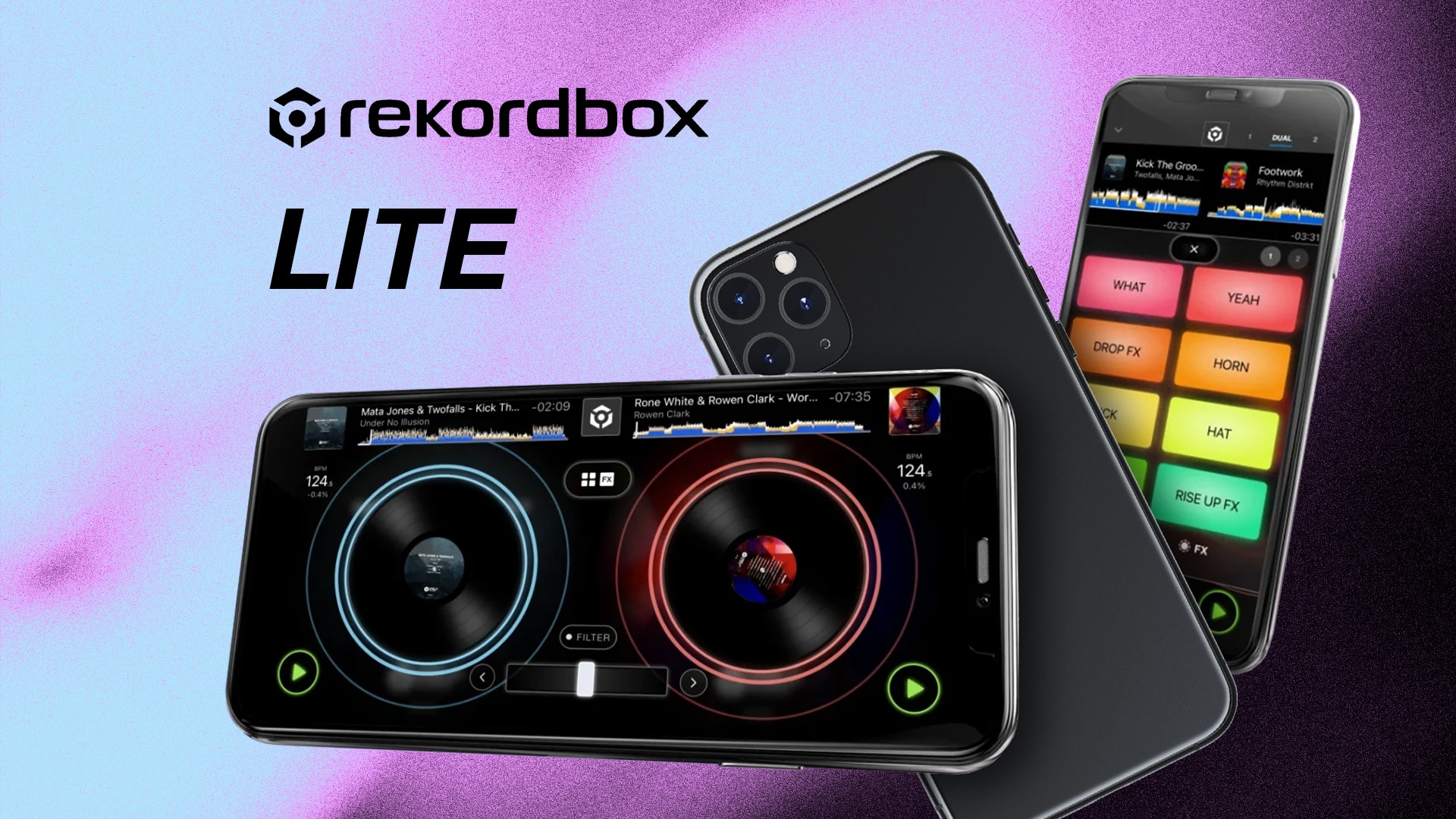

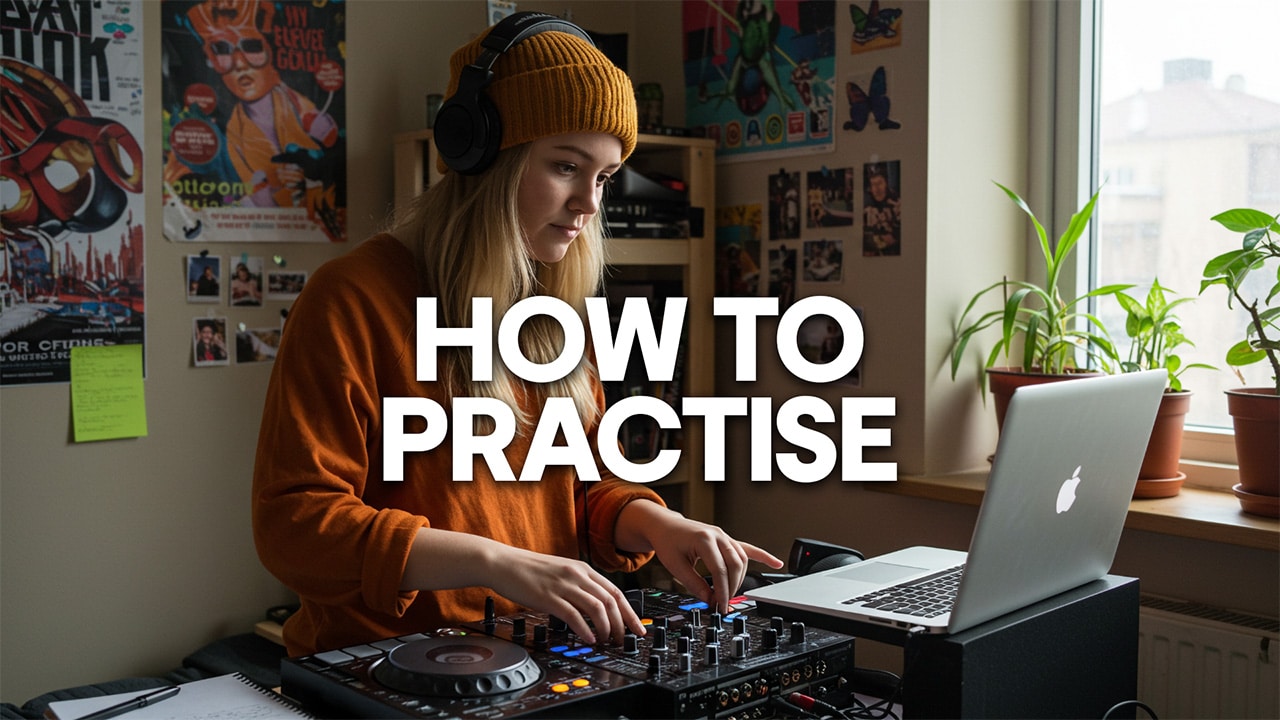
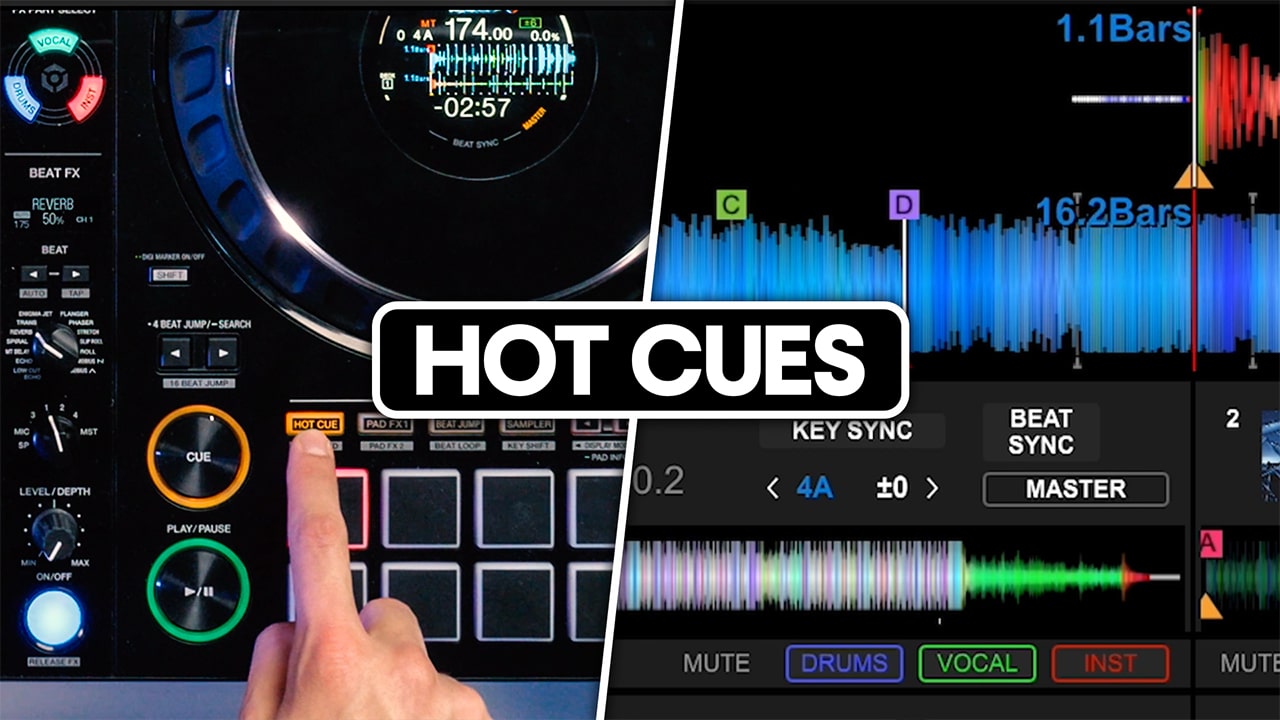
thanks for the compare it has defo helped me make a decision on what controller I need.